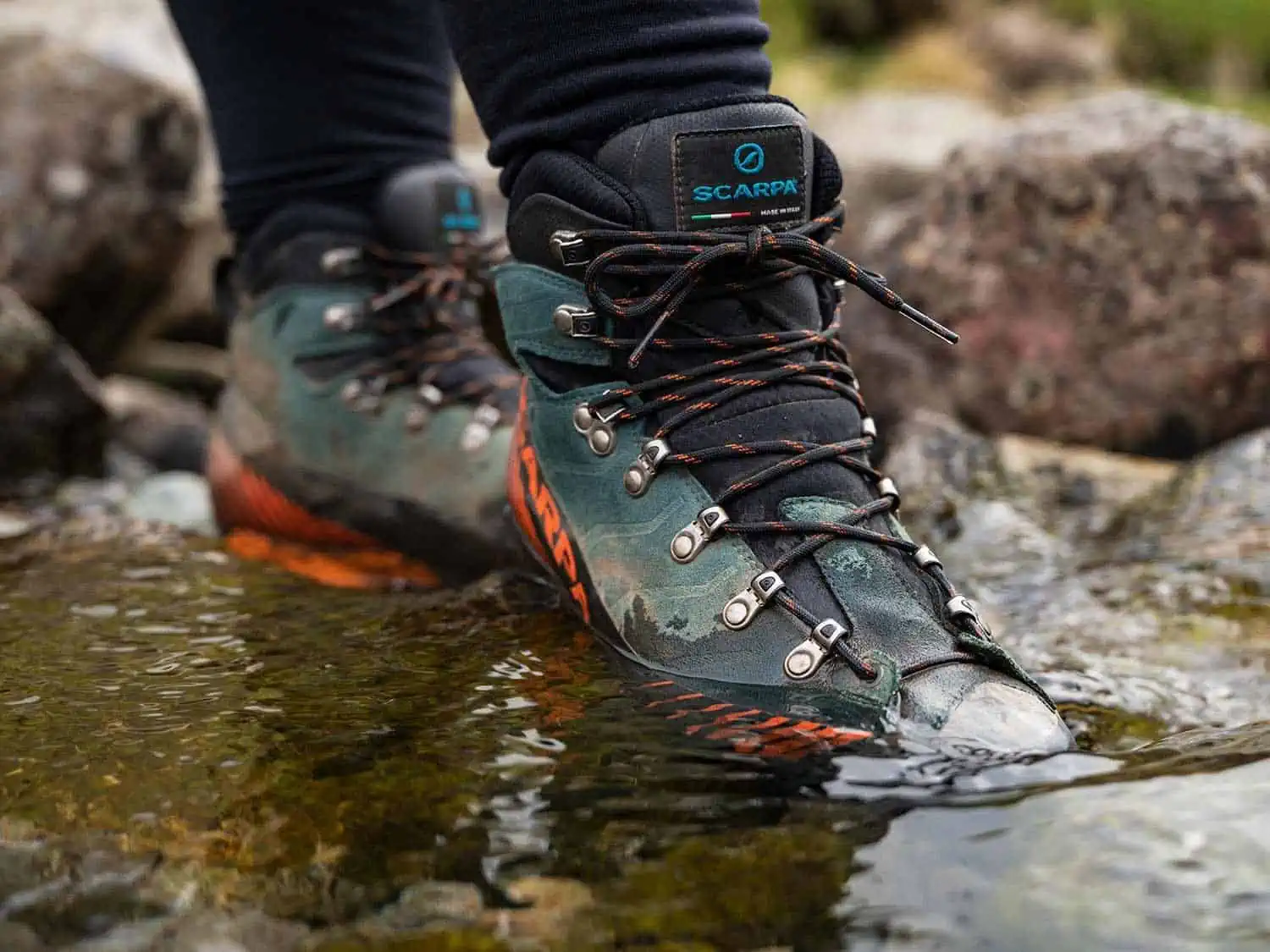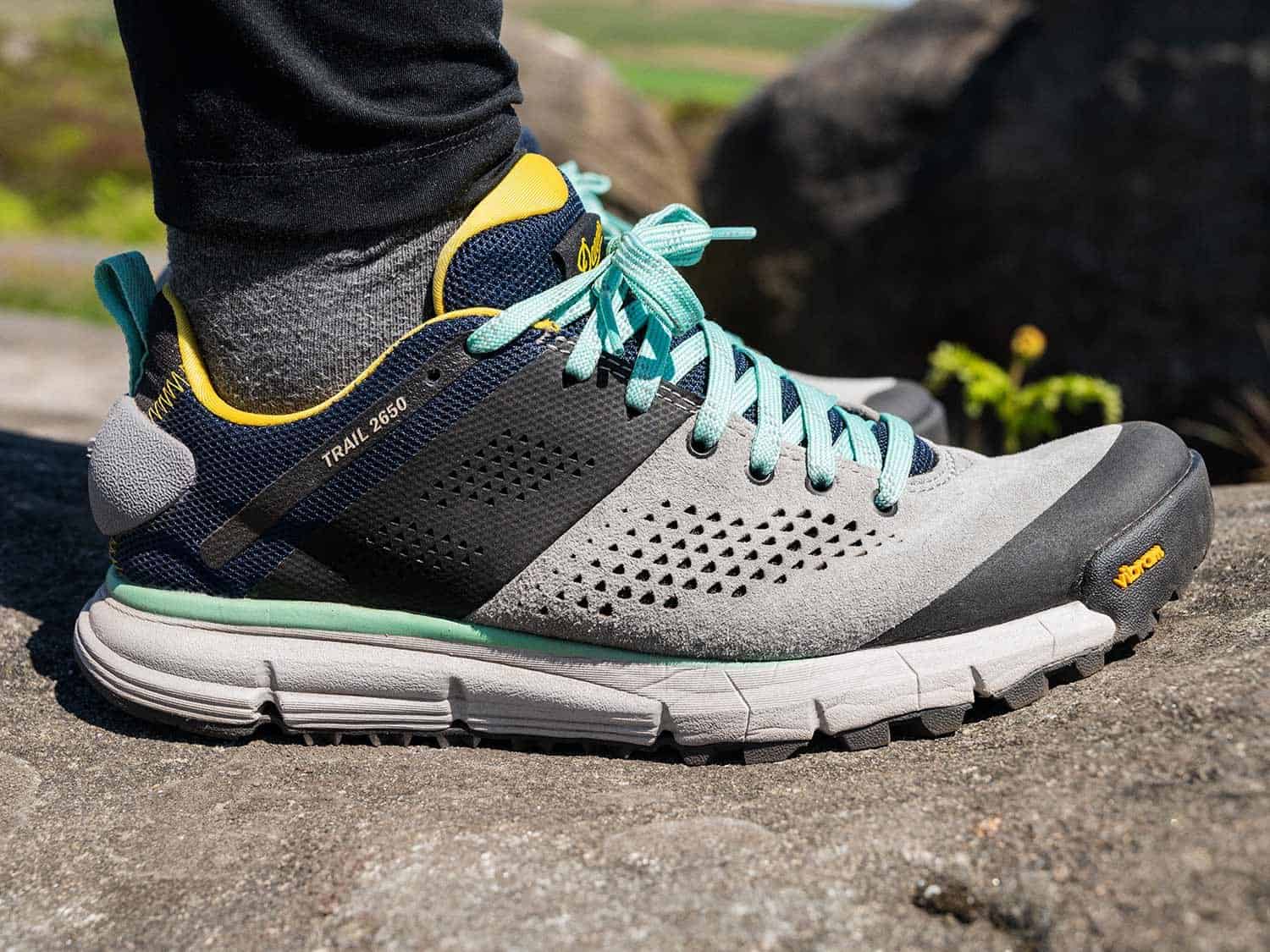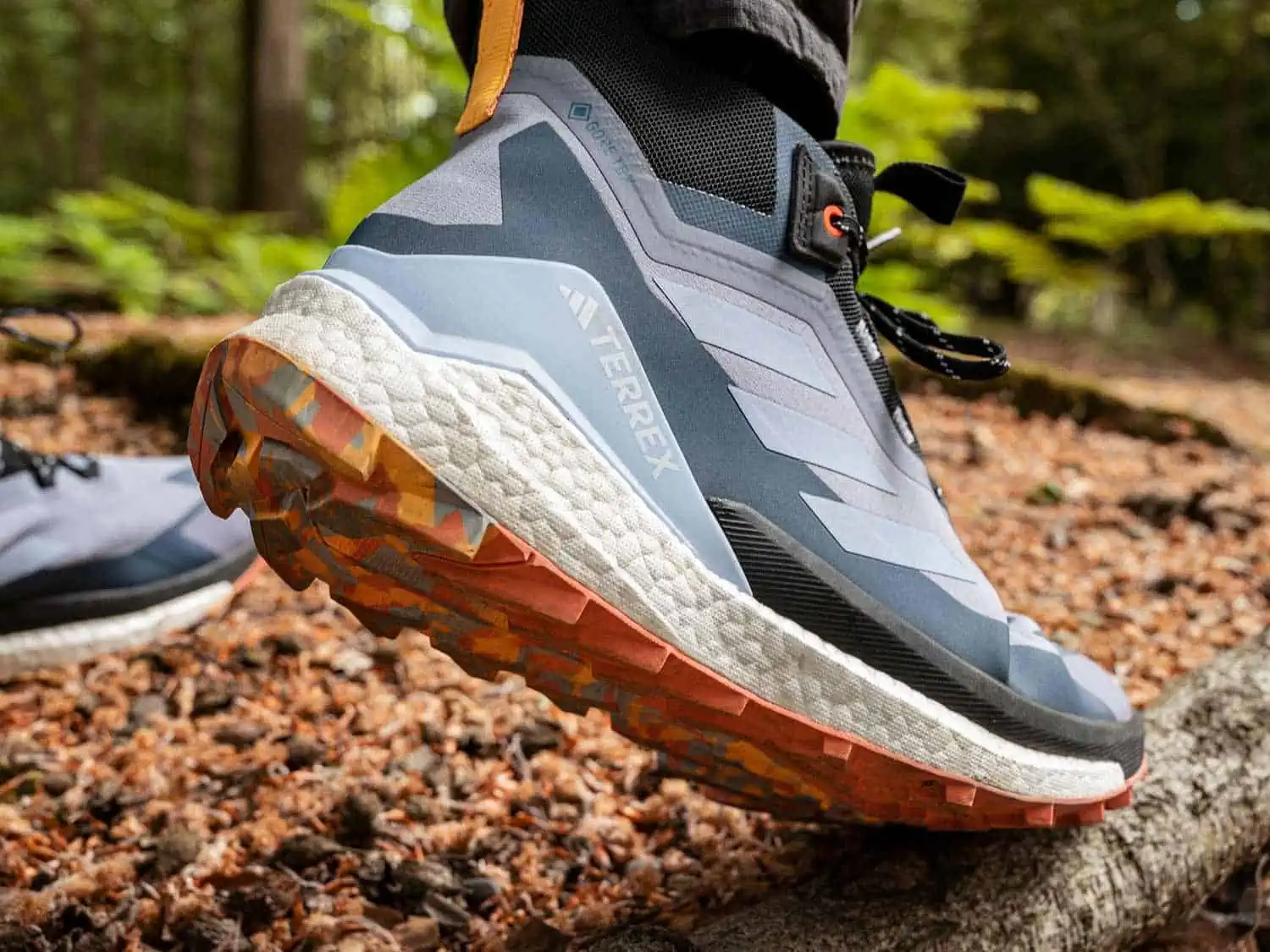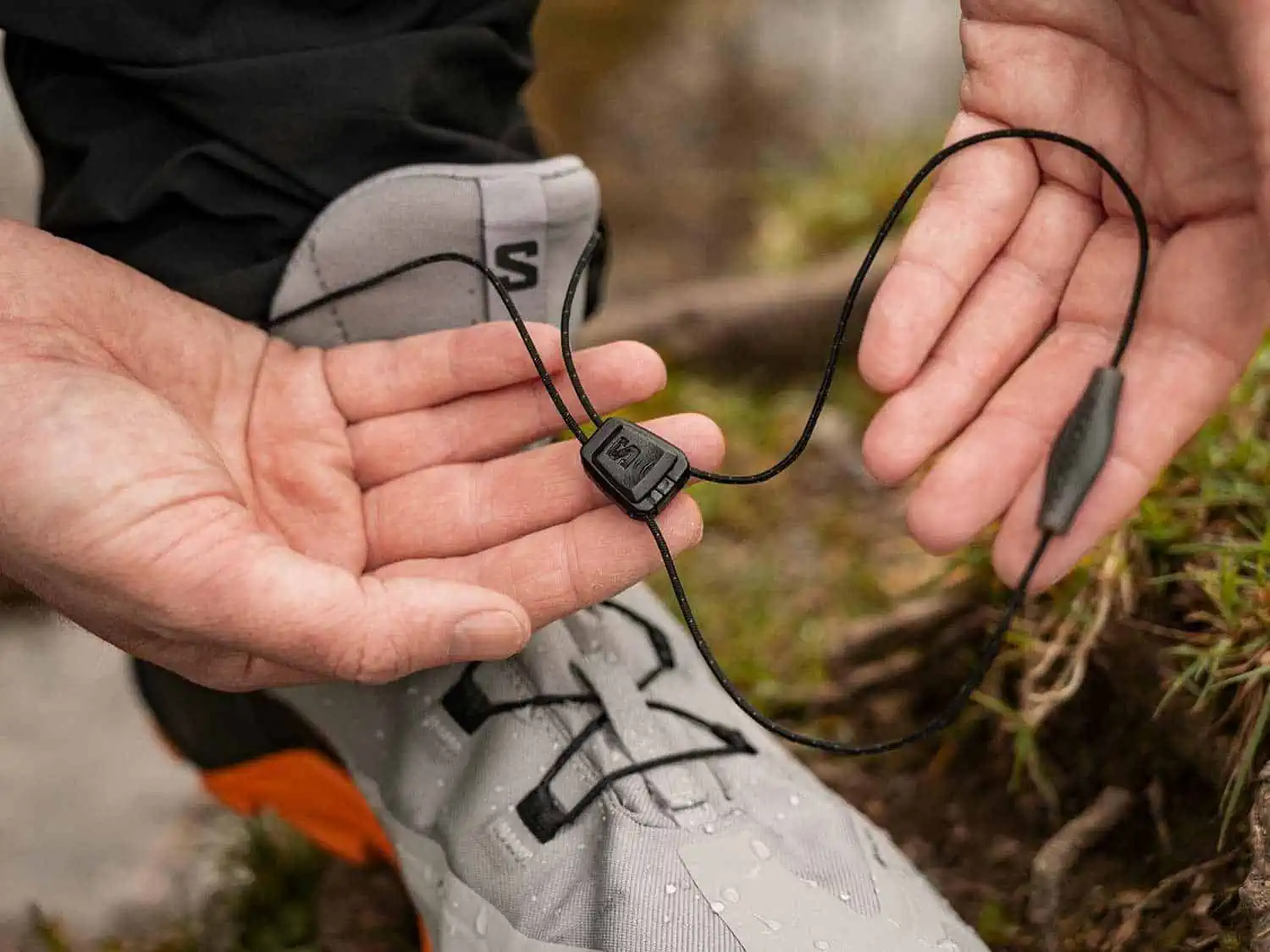Table of Contents
ToggleWhere we Test
Your hiking shoes are incredibly important – that may be a bit of an obvious statement, but there was a lot to consider outside of comfort alone when it came to testing the shoes we’ve reviewed. We’ve tested these shoes in just about every place you will encounter when out hiking, and as many different terrains as possible too to help us put together our guide to the 20 Best Waterproof Hiking Shoes. From muddy and boggy conditions through to tough alpine rocks and slippery surfaces, we’ve made sure these shoes have been through their paces! So, here’s how we tested to make our recommendations for you.
Editor’s note: This article is part of our guide to the very best waterproof hiking shoes, be sure to check out the rest of this guide for our top buying tips:
- 20 Best Waterproof Hiking Shoes
- Compare Waterproof Hiking Shoes
- How to Choose The Right Waterproof Hiking Shoes
Related content:
- How to Relace Your Hiking Shoes for Better Comfort
- Water Resistant vs Waterproof vs Water Repellent – What is the difference?
Also in this series: - 28 Best Hiking Shoes
- 10 Best Waterproof Rain Jackets for Hiking
- 9 Best Waterproof Rain Pants for Hiking
Testing Metrics
There was a lot to consider when looking at these shoes – of course we’ve focused on waterproof hiking shoes, but we have also considered things like fit, style, breathability (because who wants blisters out on the trail) as well as that all important ankle support. You want to know that you’re going to be getting the best you can in terms of fit with your hiking shoes – not to mention an easy break-in period. There are so many hiking shoes out on the market that they can pretty much end up looking the same, so we’ve drilled down into this to make it easier for you.
Type and Style
The products in our round up can broadly be divided into two categories: shoes and boots. The differences here are fairly obvious: boots are that little bit higher and therefore typically offer better ankle support. Conversely, shoes typically offer better ankle mobility and freedom of movement. In the past, it always seemed to be a given that you should wear boots when hiking, but this convention has well and truly changed and today, for general hiking and nature walking, the choice of shoes vs boots really comes down to personal preference. However, if your adventures take you into more technically demanding terrain, then the extra support and foot protection offered by boots make sense.
Hiking boots can also have technical B ratings – B1, B2 or B3. These ratings refer to how rigid the boots are and also guarantee compatibility with crampons – which can be an essential feature if you plan to go mountaineering. With each B rating, the boots get progressively stiffer and offer better protection and support to the wearers foot. You’d struggle to bend the sole of a B2 or B3 rated boot in your hands, for instance. B rated boots – certainly the sturdier B2 and B3 boots – are overkill and probably even uncomfortable for most general hiking given their stiffness, weight and generally high level of insulation. However, for adventures in the high mountains or extreme environment, these specialized boots are a real necessity.
Price
The cost of hiking shoes can vary wildly – in fact, the shoes we’ve reviewed come in between $60 and $389 – that’s a huge range. We don’t believe that hiking gear needs to cost the earth – but there are certain shoes that will be more fit for purpose than others. Generally, we found that the more pricey options were focused on being extremely lightweight and very technical as opposed to some of the more basic, entry level versions at a lighter price point. When reviewing, we put the shoes through their paces to look at how all of the features listed below come in for the price point they’re offered at.
Traction
Traction is incredibly important when it comes to hiking footwear and walking shoes. We took into consideration and tested all of the hiking shoes in our reviews out in a whole range of locations you’d expect to encounter on the trail throughout the world and their suitability as well as reliability and being depended on. We looked at if the soles had named outsoles – such as Vibram or similar, and how ‘slip proof’ they were. We also found that the softness of a sole helped with traction – especially on wet or slippery surfaces.
Breathability
The materials that the hiking shoes in our reviews are made from can have a massive impact on breathability. This has actually been a contentious issue over the years in the world of waterproof hiking shoes. However, there have been a lot of advancements over the years in waterproofing and the materials used for this. We were amazed that some of the shoes we’ve reviewed are actually waterproof as they just look like trail runners – but every single time, each performed amazingly well. Why is breathability so important to us with these reviews? Well, if your feet become sweaty in your socks, this can lead to the build up of blisters over time. Not only can this have an impact on your comfort, it can actually curtail your hike – especially important on longer treks. A hint: look to wear moisture wicking socks alongside your hiking boots (we like brands like Darn Tough) as these can make a big difference to how sweaty your feet become.
Ankle Support
A lot of the more traditional hiking ‘boots’ you’ll see on the market offer a lot more in terms of ankle support than some of the ankle shoes and hiking shoes out there. However, what a shoe gives you that a rigid boot doesn’t always, is flexibility which is of course a personal preference. We’ve tried to take this into consideration, and the different kind of terrains you could expect to use the shoes in our reviews when making our recommendations. We’ve been looking at what ankle support is there and how likely that is to help you in situations where you’re more likely to encounter potential hazards. We also looked at how the comfort advantage overall of a less rigid shoe can help with overall support and your composure on the trail.
Arch Support
Arch support is an incredibly subjective thing and can really differ depending on if you have any specific concerns around your posture, or any specific medical conditions that may require you to make adjustments to the fit and composure of your hiking shoes. Most of the hiking shoes we looked at come with a fairly standard or neutral arch support, and this can be adjusted with insoles which provide a relatively inexpensive adaptation. However, we did take into consideration how easy it would be to adapt your shoe if needed, and if there were any significant things that were noticeable, or any pain around this area in any of the shoes we reviewed.
Fit
As with many shoes for other uses other than just outdoor wear, fit is incredibly important. We took into consideration how ‘universal’ the shoes were – and tested on a variety of feet. One of our reviewers has quite narrow feet and the other slightly wider than average feet, so this gave us a real ability to look at if there would be any potential problems in terms of the fit. Sizing really does vary from supplier to supplier, with some offering their standard shoe in much wider options than others for example. Fit is something that plays a significant part on trail comfort, so this was something that we paid special attention to, and how this flowed through into price and durability.
Materials
The materials used have a great impact on rigidity – and especially when it comes to waterproofing. For example, Gore-Tex, which we’ve encountered a good number of times with the shoes we’ve reviewed, creates a sturdy almost ‘harder’ finish. Whereas suede, which is also used consistently on waterproof hiking shoes, or a mix of this and synthetic, create a very robust finish which is incredibly hard wearing. We looked at these elements very heavily when making our recommendations, and the impact the materials use have on comfort and breathability. You’ll typically find you pay more for high end materials, so we wanted to make sure you were getting a shoe worthy of the money you’re paying and will last (with some considerations for wear and tear and amount of usage) as long as possible.
Appearance
Style is very subjective, and something you think looks incredibly cool will be somebody else’s nightmare. We tried to take into consideration how the hiking shoes we’ve reviewed can ‘wade in’ to the rest of your outfit. For example, if the shoe is a more neutral color, you’re more likely going to be able to take the shoes from the trail to dinner in town in the evening. Or better still, get a multitude of uses out of them other than just hiking. We also took into consideration how the product would ‘wear and tear’ over time and how this would likely affect the aesthetics over a period of years. We also considered if it would be possible to fix up the shoes we’ve reviewed – if they can be cleaned, re waterproofed etc to keep them looking their very best for as long as possible. How the shoes would wear over time due to the trail was also an important consideration for us – the materials used can have a big impact here, especially with hard rocks, mud, wet clay or dark red sand, for example.
Durability
Of course, you’re likely to find that the durability, or how long your hiking shoes will last will really depend on where you use them and how often you use them. You can’t expect a pair of waterproof hiking shoes that you wear all day every day for five years to last as long as a pair that you wear once a week for the same period. It’s difficult to fully predict durability when it comes to hiking shoes and only years of use would tell this story completely. However, when looking at durability we took into consideration what materials were used and the finishes that were provided on each and every model when making our recommendations. Looking for materials with a good track record is likely to give you the best chance of success, as is wearing shoes suitable to the majority of places you’re likely to wear them in.
Weight
Heavy footwear can have a disproportionate impact on fatigue, and this, is something you can avoid on the trail by opting for lighter footwear. In fact, we’re pretty sure this may be one of the reasons that less formal, rigid hiking boots have become a lot more popular in recent years, as they potentially allow you to go further, and maybe even faster. Even if you don’t consider yourself an ultralightweight backpacker, this is still an important factor. Pretty much all of the shoes in our roundup would be classed as lightweight, but there were some shoes that were heavier than others. The way we tested this was pretty simple – time on the trail – how did they feel after time, did we notice ourselves feeling more fatigued if the shoe was heavier, for example.
Insoles
The insoles that you get off the peg in your waterproof hiking shoes are likely to be fairly generic. So if you have specific issues that you need to accommodate for, it’s always best to look at orthopaedic solutions and specialist insoles that you can replace the manufacturer ones with. That said, some of the manufacturer insoles are better made than others and come with more cushioning which can have an impact when it comes to comfort. We took this into consideration the same way we did with all of our recommendations – on the trail to see how much comfort came from the insoles provided by the manufacturer.
Break-in Period
It would be wise to say that you can’t guarantee any hiking shoes will be able to be worn straight out of the box. However, some of them have more of a breaking in period than others. Some shoes, often made with more ‘comfort prone’ materials like suede or some synthetics will generally be comfier, quicker. The cushioning inside and any ill placed stitching or rigid materials in the inner will have an impact too. The breaking in period is one of the hardest parts of buying new hiking shoes – how do you know when you can take them out on the trail? You can generally get a feel pretty quickly though. So we found that the shoes we gave our top spots to were usually the ones that were quicker to get going in, as well as hitting the other areas above and below and being well waterproofed.
Lacing System
There are various lacing systems out there – from more traditional laces to boa closures. These can make a difference to the feel of the shoe and how it fits on your foot especially if you have a slightly different foot shape that may mean that you need the top half of the shoe to be tighter than around the toe for example. We took into consideration the flexibility of things like this when assessing the lacing system on the products we’ve recommended, as well as their versatility for replacement, too.
Toe Protection
In the outdoors you’re of course going to come up against potential hazards that you could stub your toes on – sharp rocks, branches in the trail and other such things. This is incredibly important as it can prevent toe bruising and even toe breaks which will be significant if you are looking to complete a longer distance trail in your new waterproof hiking shoes. We found that the hiking shoes we reviewed really differed in just how much protection they offered the toes. Generally, the more rigid boot style offered the most protection, especially if the toe section was really rigid. However, we did find that a number of the more flexible ‘trail runner’ style shoes we’ve reviewed offered excellent protection too. We took this into consideration on the trail in every shoe we looked at, and also looked to compare how this came up with the price point they’re offered at.
Hiking Shoes v Hiking Boots
As you’ll see, a lot of the products we’ve reviewed here are hiking shoes as opposed to hiking boots. It’s really a personal choice, but in the past it was really seen that hiking boots were generally the best option due to their support, durability, waterproofing etc. However, in recent years, there has been an explosion in the market for ultralight shoe style products. Of course, hiking shoes don’t offer the same level of ankle support as a boot would, but it really depends on the kinds of locations you’re going to use them. We took this into consideration as much as possible when we were reviewing and we took each and every product we reviewed into a variety of different terrains and weather scenarios to see how they sat up next to each other.
Disclaimer: This article contains Affiliate Links. You won’t pay any more for buying through these links, but we may receive a commission from any purchases made through them. As an Amazon Associate, I earn from qualifying purchases. If you choose to support us by buying through our links, we thank you as it helps us to continue providing the resources we do to help you enjoy the outdoors more!




